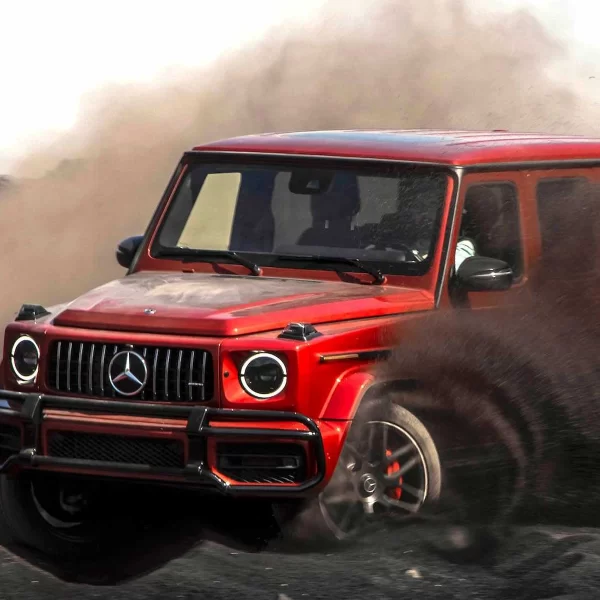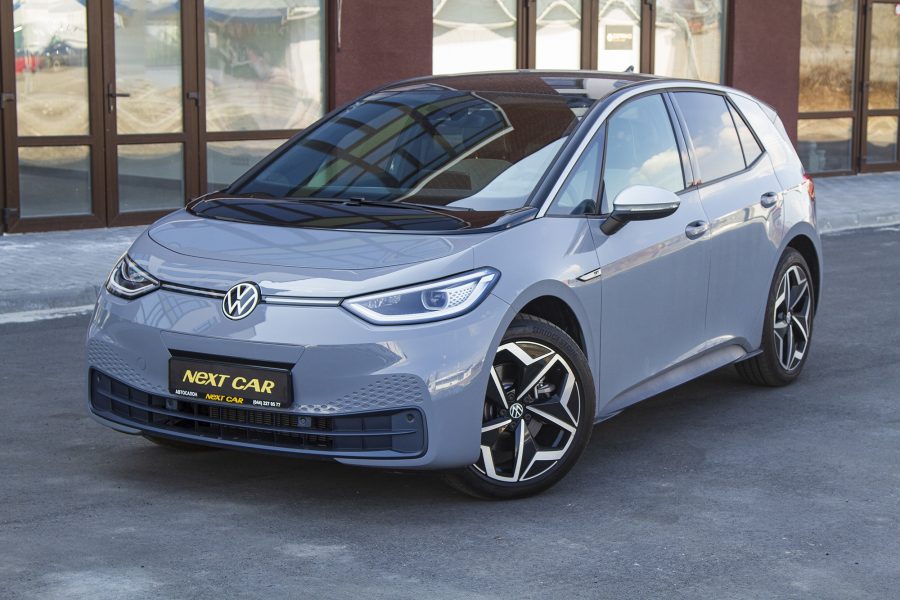
Test drive behind the wheel of a Porsche 911 R
It's already getting a little boring: we're back at the Silverstone race track at the Porsche Experience Center. The weather is good, and the asphalt, most importantly, is dry at the moment. And instead of honing your driving skills behind the wheel of a Cayman GT4 (we wrote about how it drives in Auto magazine), something special happened - a driving experience on the verge of a dream.
And instead of honing your driving skills behind the wheel of a Cayman GT4 (we wrote about how to drive a car in Auto magazine), something special happened - a driving experience on the verge of a dream.
The Cayman GT4 is a great car that can give the driver an unforgettable driving experience, but when the opportunity arose to get behind the wheel of a Porsche 911 R (yes, a 911 R that is already sold and you just can't imagine if you missed it), Andreas' latest creations Preuninger and his design brush, I just didn't hesitate - the Cayman GT4 had to wait.
It was first shown at this year's Geneva Motor Show and was intended primarily for current owners of the ultra-fast 918 Spyder and a few other select people who were given the opportunity to buy from Porsche. Of course, all 991 copies (since this is, of course, a model from the 991 series) were sold out even before the blanket was removed at the press conference in Geneva. Yes, this is life in the Porsche family.
There is no point in discussing how "fair" such a policy is and how many tears are shed over it. Of course, Porsche isn't the only brand that's making good money off of these and other limited editions. Recently, almost everyone is getting down to business, because the money intended for the purchase of more or less exclusive and reasonable “Limited Edition” cars is enough for some. Here, Porsche should at least admit that in exchange for a nice pile of money for those who might have thought of a 911 R, it put in its hands a car that, especially in terms of driving experience, is really something special.
And before we get into this, the most important aspect of the car, some more dry (but important for understanding the continuation of the story) data. The R has the same engine as the GT3 RS, but it's hidden in the body of a regular GT3 (the GT3 RS shares it with the Turbo). Therefore, among other things, the rear wheels are an inch smaller than the RS (20 instead of 21 inches), the huge rear wing and the aerodynamic elements on the nose of the car are also “missing”. On the other hand, as with the RS, some parts of the body are made of carbon and magnesium - of course, in order to keep the weight as low as possible. Because the 911 R has a classic manual transmission that is lighter than a dual clutch, the dial ends up stopping at 1.370, 50 kilograms less than the GT3 RS. However, due to different gear ratios (and manual transmission in general), the R is half a second slower than the RS (100 instead of 3,8 seconds) and 3,3 kilometers per hour higher (13 instead of 323 km). / hour).
Thus, the 911 R seems to be a more down to earth, civilized version of the GT3 RS - with one important exception. It's only available with a manual transmission, which means no laziness on the open road with the transmission in D. On the other hand, that's why the R is a top-class sports car, while the GT3 RS, with its fast brutal PDK dual-clutch gearbox, is the only car with license plate.
The six-speed manual transmission is brand new and yes, I can confidently say it is the best manual transmission I have had the chance to overtake in over 40 years driving. Point.
To be clear, the movement of the gear lever is extremely precise and smooth. It is not the shortest gearbox, but given that it is difficult to find a manual gearbox that can shift gears faster, this is really a minor detail. The feeling is unique, as if the invisible background leading to the lever was hidden in the center console, and as if all connections were made through connections with ball bearings and precise guides. Imagine: every movement is on the verge of possible precision, speed and ease.
But the surprises don't end there. When I settled into a carbon-cage seat (which has a checkered fabric in the middle like on the original 1967 RS) and depress the clutch to shift into first gear, I almost pinned the pedal to the ground. I expected the clutch to be stiff, like in the Cayman GT4 and similar racing Porsches with a manual transmission. Well it’s not. The grip is incredibly soft, but still accurate, which is written on the skin of fast, but still "civilian" drivers. Well done, Porsche!
However, on the track. The car can be used almost instantly - and it's really versatile. The combination of a single-plate (half-mounted) clutch and lightweight flywheel means revs rise and fall almost instantly, and the combination of such an engine with the new gearbox (marked GT-Sports) is heavenly. With the help of a computer brain that knows how to add gas when shifting when needed, anyone can become a better driver, while the 911 R still knows how to reward those who put in the effort.
It's the same with the steering wheel. It is as eloquent and communicative as in the Republic of Slovenia, but at the same time a little lighter – which, given that it is often only one-handed due to the manual transmission, is just right for the driver. And this is what impresses the 911 R: everything (compared to, for example, the RS) can be made a little easier, everything is a little less demanding, and at the same time it has not lost a single drop of driving pleasure for those who "master" this. The 911 R does exactly what any great sports car should do: instill confidence in the driver, give them a clear idea of what's going on with the car, and encourage them to play. And yes, the 911 R is really playable, thanks in part to the four-wheel steering and great, but still road tires.
Twenty laps and many different kinds of turns (including a section of the track reminiscent of the famous "Corkscrew" at the Laguna Seca racetrack) flew by in an instant. The two longer planes allowed me to get the 911 R up to decent speeds and have a good braking test. And the only thing left in my memory is how smooth the ride can be and how fast it can be from circle to circle. I admit I didn't look at the speedometer (otherwise every racing school will tell you that it only spoils your concentration), but I'm sure it was faster than the other car I drove that morning.
How does the 911 R drive on normal roads? The track experience does not speak about it directly, but considering everything that he showed on it, I am convinced that he does well there too, and that the daily ride with him is in itself a pleasure. It is that indescribable harmony of the mechanical parts of the car that ultimately leaves the driver happy.
That's why the 911 R is so hard to reverse. Obviously, due to the limited edition, few of them will be used daily on everyday roads. But if I compare it to the GT3 RS, which I have a lot of experience with, the comparison becomes clearer. However, the RS is just a slightly civilized racing car, a sort of GT3 Cup for the road, while the R is much more refined, cultured and satisfying, suitable for kings too, and not just for racers - of course also because of the top manual transmission. . While the RS can be jittery and tiring as it requires all the driver's concentration, the R's driving is much smoother and more enjoyable, but still fast and quite adrenaline-pumping. This allows the driver to smile already during this (and not just when he survives). Some of that is due to the lighter weight (the R I rode didn't even have air conditioning), but most of the fun still comes from the memorable manual transmission.
So is the 911 R an enthusiast model car? Does it have to be semi-racing, demanding, uncompromising, sometimes even rough? Or is a car like the 911 R a better choice? This question is difficult, almost impossible to answer, because the answer to it, of course, also depends on personal beliefs. But one thing is clear: the 911 R is one of the best sporting Porsches around, and can be safely placed next to the GT3 RS. It would be nice to have both. 911 R for every day and RS for Sunday morning on an empty road or chasing a race track. But when it comes to compromises between the two, the 911 R is unbeatable.
text: Branko Božič · photo: fabrika

